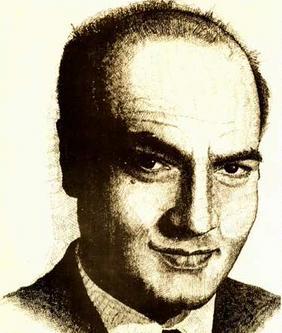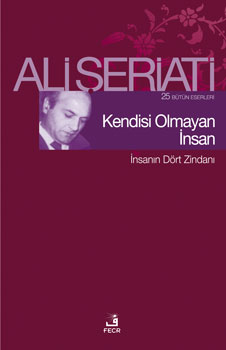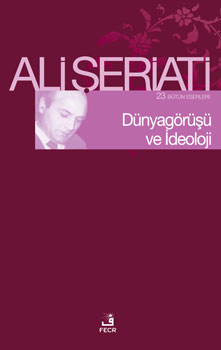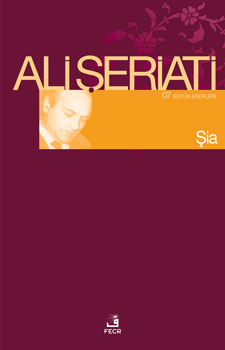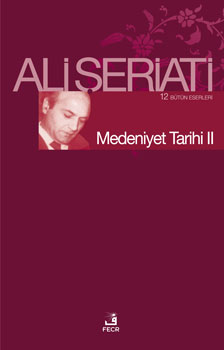
DR. ALI SHARIATI AND THE ROLE OF SACRED MORALITY
The Iranian philosopher, lecturer, romantic, and poet Ali Shariati was part of one of the most significant revolutions of the century, one that avoided the extremes of a military coup or a Marxist revolt. It was a uniquely Islamic revolt, involving Shi’a paradigms such as the martyrdom of Hosain and the role of the scholarly mullahs, Islam’s confrontation with the West and the hopes for an ideal Islamic society. Shariati was a hero of
His independent vision of Islam was one primarily of social justice and reform, more universal than the isolated ivory tower of the Shi’a clerics. The need for his message arose out of the brutal suppression of open political discourse at the hands of the Pahlavi regime, rising quickly in the fermented air of oppression. [2] Yet his was not just a dated, historical reaction to particular circumstances. However unrealistic his vision for
Shariati was born in 1933, son of a progressive, nationalist preacher. [4] He was raised in a village near the northeastern city of
After achieving his doctorate in 1965, he attempted to return to
He later went on to teach at an institution called the Husainiyeh Ershad in
This “Islamic sociology” he taught was a redefinition of humanism in the context of Islam and answered an ideological need among Iranians to search for progressive solutions beyond the stagnant debates of the mullahs and the wholesale Western-style corruption of the Shah. The Shah responded with a third imprisonment in 1973, closing down the Ershad and jailing Shariati for two years, followed by his exile to
In the time between his death and the Iranian Revolution, many of his ideas played a direct role in the struggle of the average Iranian against the regime. They would eventually be appropriated by the Islamic clergy as part of a revolutionary effort to return to a noble sense of Shi’a identity. His book entitled “The Return To Ourselves” conveyed the message embraced by the mullahs during the revolutionary period: that “with a return to true Shi’a Islam,
Those same mullahs, however, felt that some of his views were far too extreme, and eventually considered him dangerous. His independence as a thinker did not place him neatly in either extreme of the revolution; after being imprisoned by the Shah, he would still years after his death have his works banned in his native country through the efforts of the clerical establishment. [20] His redefinition of Islam on an individual, personal level threatened their sense of a power base. His huge audience listened to him speak of an Islam which did not focus on the institution of the mullahs (Islamic scholars). [21] The mullahs tried to belittle and downplay the significance of his writing by accusing him of being ill informed in matters of Islam. [22]
Despite this friction with Iranian clerics, Shariati was not by any means anti-Islamic. To the opposite extreme we find in his writings and lectures ample evidence to suggest that he still identified his thought closely with a sense of deep religious identity, precluding even issues of race or nationality:
Since WWII, many intellectuals in the
These Shi’a roots were to prove fertile for revolution, involving a refocusing of the prominent themes in Shi’a such as the martyrdom of Hosain. No longer was Hosian thought of as simply a martyr, but a revolutionary who was determined to overthrow an unjust government. [24] During this time in
There was an element of traditional Marxist “class struggle” to much of his thought, evident in his essay “Reflections of a Concerned Muslim: On the Plight of Oppressed People”:
Has God chosen His prophet from among our class?
I believed in the prophet Mohammed since his palace was no more than just a few rooms constructed of clay. He was among the workers who carried the loads and built the rooms. [26]
Again, in his essay “Civilization & Modernization,” his thought apparently draws close to Marxist doctrine: “The machine emerged and developed during the 17th, 18th and 19th centuries in
This ideal, for Shariati, must first include aspects of social reform that still belie a Marxist influence, such as his essay “Where Shall We Begin”: “An empty stomach lacks everything. A society, which has economic problems also, lacks spiritual wealth. Whatever is called ethics in a poor country is nothing but deviant customs and habits, not spirituality.” [31] It is evident that though his unique expression of Islam was based on a sense of economic justice, it went much further into realms of “spiritual wealth” that neither Marxism nor capitalism alone could fulfill.
The infusion of a consciously Islamic “class struggle” with a distrust of the “alienation” of Western science and technology was an innovative mix that influenced a generation of Iranians. Religious identity is revitalized by its challenge put to the West of “a religion not lower than science, but rather one higher than it.” [32] This sort of rhetoric by Shariati gave Iranians a sense of identity as the holders of a special tradition.
In this way, though he had his work banned, was jailed, exiled, and possibly murdered by his native
Notes
[1] Fischer, Michael M.J.,
[2] Fischer 5.
[3] Keddie, Nikki R., introduction, Religion and Politics in
[4] Keddie, introduction 12.
[5] Akhavi Shahrough, “Shariati’s Social Thought,” Religion and Politics in
[6] Sharough 125.
[7] Sharough 125.
[8] Sharough 126.
[9] Sharough 126.
[10] Sharough 126.
[11] Sharough 127.
[12] Mottahedeh, Roy, The Mantle of the Prophet: Religion and Politics in
[13] Mottahedeh 353.
[14] Sharough 127.
[15] Sharough 127.
[16] Mottahedeh 16.
[17] Fischer 5.
[18] Shariati, Ali. Marxism and Other Western Fallacies: An Islamic Critique. Trans. R. Campbell.
[19] Keddie, introduction 12.
[20] Fischer 74.
[21] Fischer 183.
[22] Fischer 83.
[23] Mottahedeh 331.
[24] Mottahedeh 353.
[25] Fischer 213.
[26] Shariati, Ali, Reflections of Humanity: Two Views of Civilization and the Plight of Man (Houston: Free Islamic Literatures, 1980) 6.
[27] Shariati, Reflections 27.
[28] Shariati, Reflections 22.
[29] Shariati, Marxism 39.
[30] Shariati, Marxism 39.
[31] Books and Speeches: Dr. Ali Shariati, ed. Mohammad Reza, 1997,
[32] Books and Speeches: Dr. Ali Shariati, ed. Mohammad Reza, 1997,
Bibliography
*Books and Speeches: Dr. Ali Shariati. Ed. Mohammad Reza. 1997.
*Fischer, Michael M.J.
*Keddie, Nikki R., ed. Religion and Politics in
*Mottahedeh, Roy. The Mantle of the Prophet: Religion and Politics in
*Shariati, Ali. Marxism and Other Western Fallacies: An Islamic Critique. Trans. R. Campbell.
---. Reflections of Humanity: Two Views of Civilization and the Plight of
-
Kaynak:
http://www.mindground.net/shariati.html#_edn2
